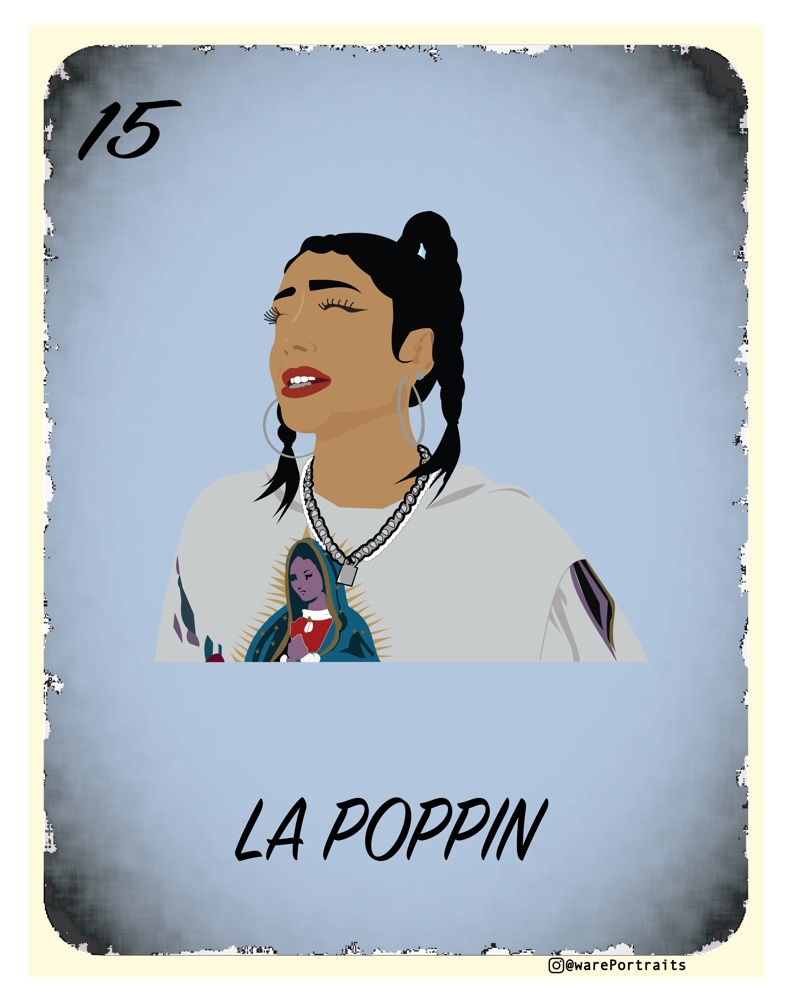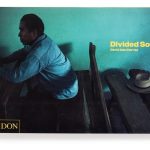By
Erin Coulehan
Images courtesy
Ware Portraits
In a city as vibrant and culturally rich as El Paso, it’s no surprise that local artist Eric Ware, the talent behind Ware Portraits, is making waves by combining traditional art forms with modern creativity. What started as a personal hobby and distraction from life has blossomed into a celebration of El Paso’s most notable figures through the reimagining of Lotería – the beloved Mexican game that has deep roots in Mexican culture.
With his “People of El Paso” series, Ware is using the history and tradition of Lotería as a canvas to honor local public figures, giving the classic game a new twist.
Ware’s artistic journey didn’t start in the traditional way. In 2022, feeling drained by a job that no longer inspired him, he made the bold decision to go back to school, choosing to study information technology. But during his first semester, a graphic design class changed the course of his life. A newfound love for Photoshop and digital art led him to experiment with Adobe programs, and soon, what began as playful joke Lotería cards for family and friends transformed into something far bigger.
This artistic exploration culminated in his own version of Lotería, where he captures the likeness of local El Pasoans – musicians, influencers, and community leaders – and turns them into stylized, colorful portraits. His passion project has become an homage to the culture and people of El Paso, honoring their contributions to the city while also revitalizing a centuries-old tradition.
Lotería, often called “Mexican Bingo,” has a long and storied history. Originating in Italy before making its way to Spain and finally arriving in Mexico in 1769, Lotería began as a game enjoyed by the colonial elite. Over time, however, it became embraced by all social classes and turned into a cultural phenomenon. Throughout the 19th and early 20th centuries, traveling ferias (fairs) brought the game to rural farms and towns, where it became a popular weekend pastime.
Unlike Bingo, where a number is randomly drawn, Lotería features a deck of 54 cards with vibrant, illustrated images, each with its own name and associated number. The game is as much about the art as it is about chance. Players use a tabla, or game board, covered with images corresponding to the cards drawn. What makes Lotería stand out is the announcer’s playful use of language. Instead of simply calling out a number, the announcer recites clever rhymes, phrases, or social commentary to hint at the card’s identity. This wordplay, often imbued with satire or references to contemporary events, has been an essential part of Lotería since its inception, adding an extra layer of intellectual engagement to the game.
Inspired by the rich visual and cultural legacy of Lotería, Ware embarked on his “People of El Paso” series, where he creates personalized Lotería cards of local public figures. His portraits of musicians such as Krystall Poppin, Khalid, and Evander Griim not only capture the likeness of these notable El Pasoans but also serve as a tribute to their impact on the city. These artists, like the iconic Lotería figures, are woven into the fabric of El Paso’s cultural landscape.
“For me, since I was younger, I’ve always been inspired by local musicians coming out of El Paso,” Ware says. “I used to have my own music label with local musicians when I was about 21, so the love has always been there.”
In this way, Ware Portraits blends the traditional with the contemporary, using the familiar format of Lotería to highlight the uniqueness of El Paso’s public figures. Just as Lotería cards once featured everyday objects like “El Sol” (the Sun) or “La Estrella” (the Star), Eric’s modern rendition features the real stars of El Paso, showcasing their influence in a way that connects with the community.
Lotería has long been more than just a game. It’s a cultural touchstone that has served as a tool for education, storytelling, and social commentary. In the early 20th century, Lotería was even used as an educational aid, with Catholic-themed versions aiding parishioners in learning religious symbols. Its visual and intellectual appeal has allowed the game to transcend generations and become an integral part of Mexican and Mexican-American identity.
Ware’s work taps into this cultural significance.
By using the format of Lotería, he’s not only creating art but also engaging with the deep history of the game. His portraits invite viewers to think about the cultural figures who shape El Paso, just as Lotería once used its images to reflect on Mexican society. In paying homage to the city’s artists, influencers, and leaders, Ware captures their essence in a way that feels both nostalgic and fresh.
As his art continues to gain traction, his passion for celebrating El Paso’s cultural icons through Lotería grows. Ware’s work has evolved from something fun and personal to a larger tribute to the community he loves. Through pop-up markets, Instagram giveaways, and the ongoing support of his followers, Ware Portraits is quickly becoming a staple of El Paso’s art scene.
For Ware, the journey is just beginning.
With every new portrait, he continues to merge the rich tradition of Lotería with modern digital art, creating a unique celebration of the city and its people. His love for both El Paso and the iconic game that has brought joy to so many is evident in every piece he creates.
In honoring the past while looking toward the future, Ware Portraits reminds us all that art, culture, and community are deeply intertwined. Through his creative twist on Lotería, Ware is making sure that the people of El Paso, much like the beloved game itself, remain a cherished part of the city’s story for generations to come.
















